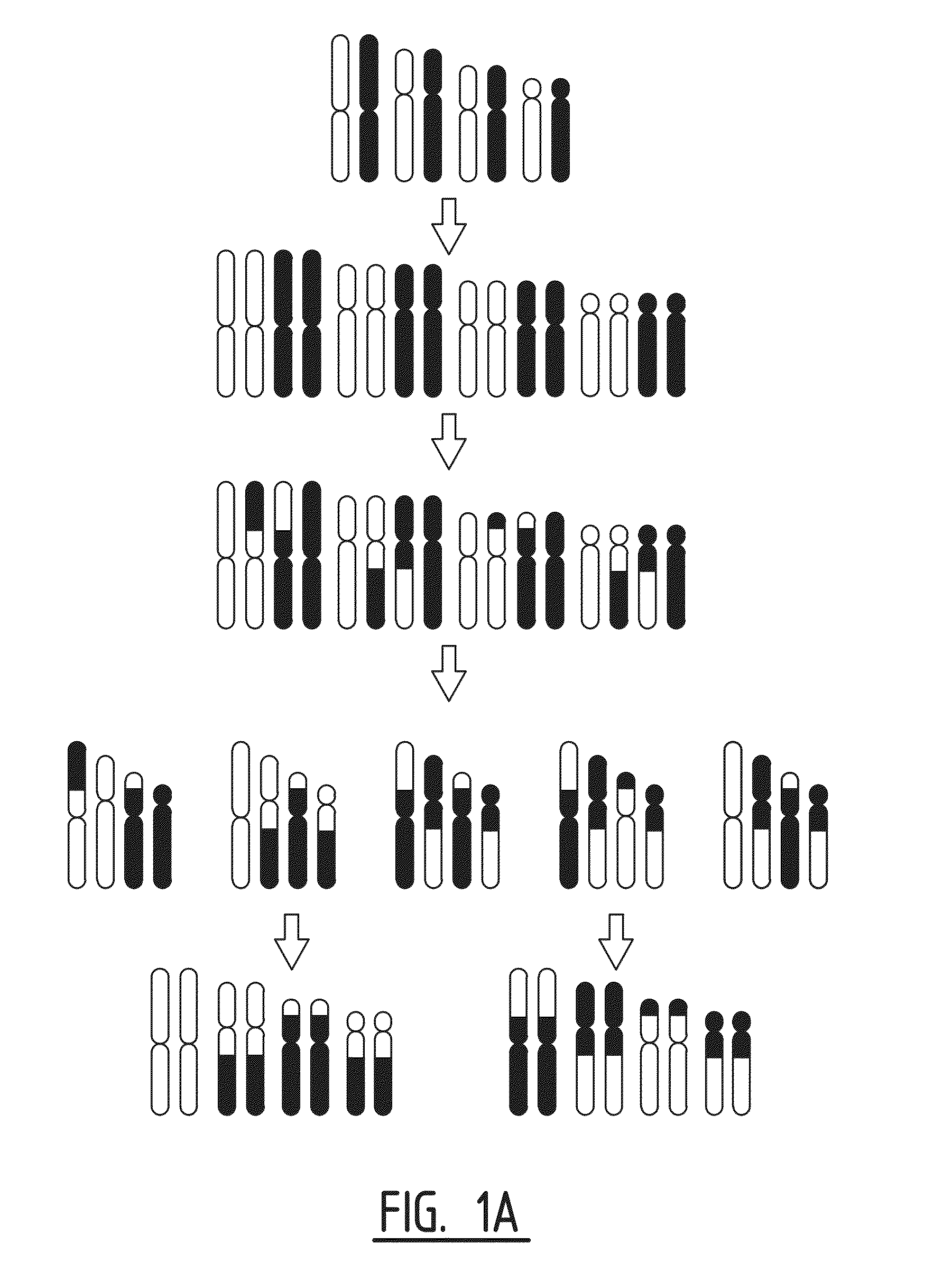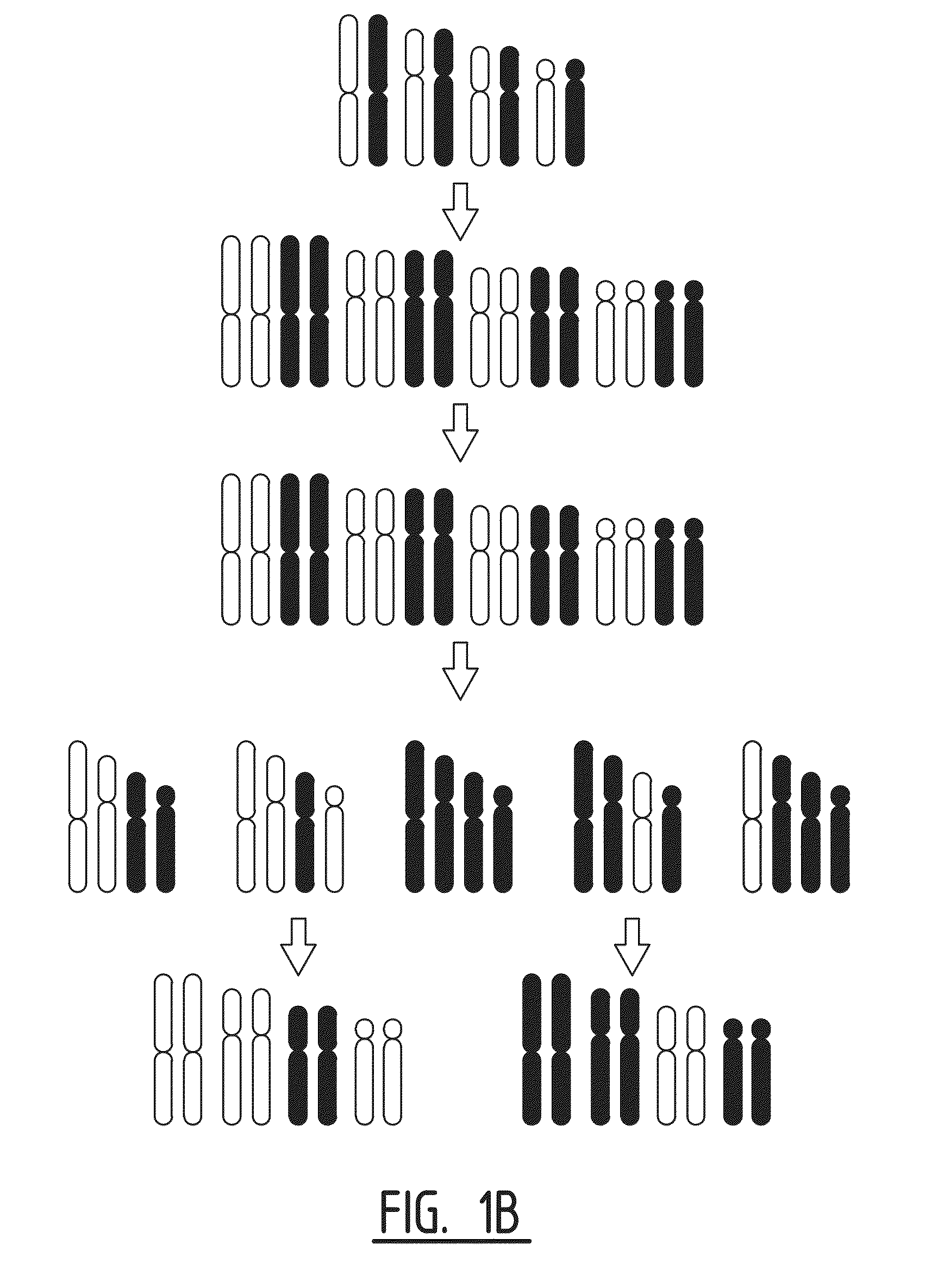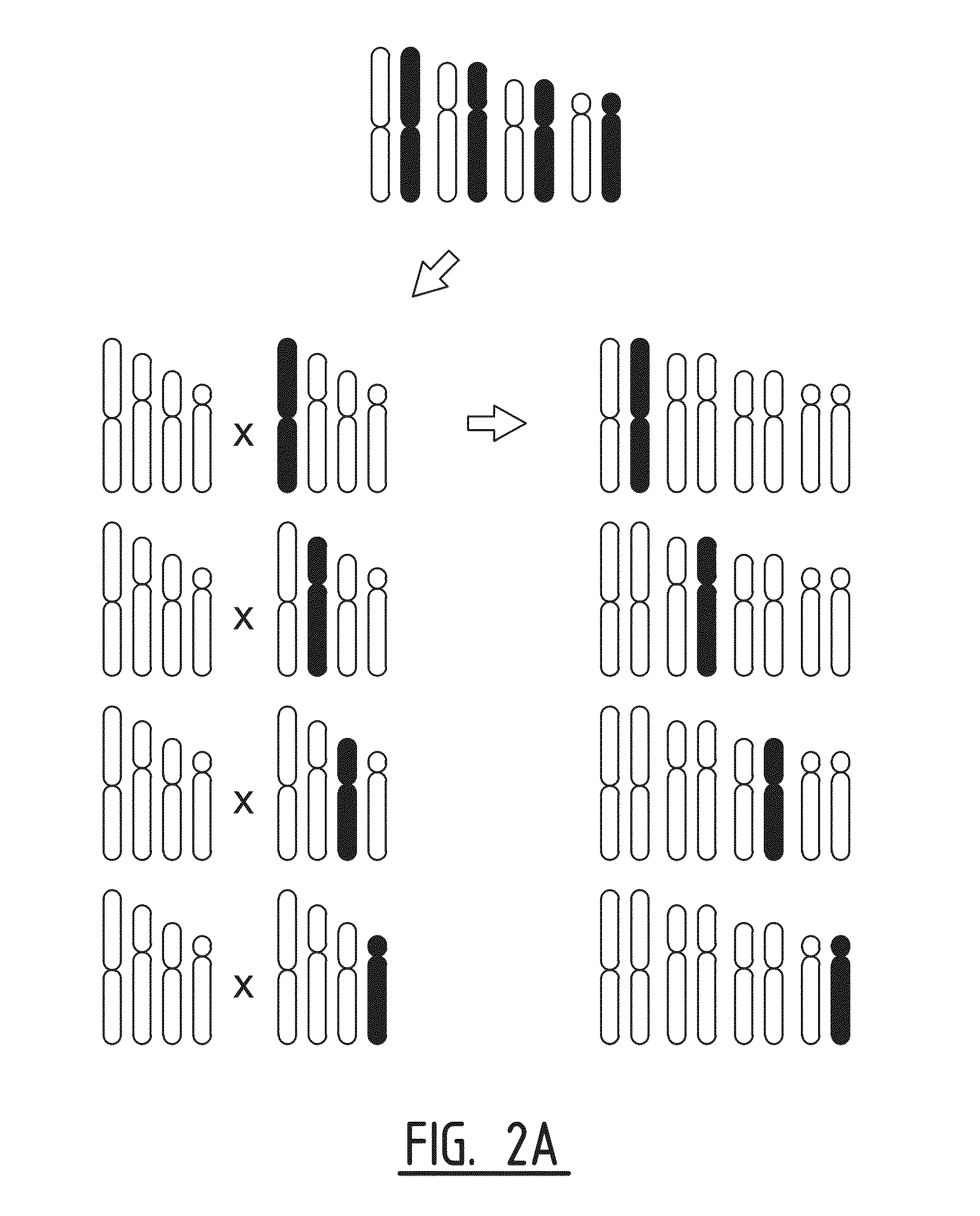Line design
- Summary
- Abstract
- Description
- Claims
- Application Information
AI Technical Summary
Benefits of technology
Problems solved by technology
Method used
Image
Examples
example 1
Chromosome Replacement in an Arabidopsis Hybrid
[0128]A hybrid Arabidopsis thaliana plant was created, by crossing a first plant of the Col-0 accession (homozygous) with a second plant of the Ler accession (homozygous). This Col-0×Ler hybrid was genotyped with two differentiating SNP-markers for each of the five chromosomes, to confirm its genomic make-up. For each of the five chromosomes the contribution of both parental accessions could be detected.
[0129]In order to recreate this hybrid and therein replace the two copies of one particular chromosome in this hybrid background with those from a third accession (Cvi) (homozygous), the claimed invention was applied as follows. In the terminology of this application the Col-0 and Ler plants are parental lines, and the Cvi plant is a donor parent, see e.g. FIG. 3A.
[0130]In a first step, an RNAi-construct targeting the DMC1 gene of Arabidopsis (Wijnker et al, 2012; Nature Genetics 44: 467-470) was introduced into the genome of Col-0 and L...
example 2
Chromosome Replacement in an Arabidopsis Hybrid, with a Non-Transgenic End-Product
[0139]In Example 1 the resulting hybrid progeny was transgenic in nature (resulting in a regulated GMO-status and additional phenotypic difficulties resulting from the presence of the RNAi construct targeting DMC1, which e.g. leads to partial sterility due to the occurrence of aneuploidy, caused by the suppression of meiotic recombination during spore formation).
[0140]In the current example this problem is overcome, by including additional experimental steps in the procedure, after selection of the following two DH plants:[0141]A first plant harbouring chromosome I of Cvi in combination with the remaining 4 chromosomes from Col-0;[0142]A second plant harbouring chromosome I of Cvi in combination with the remaining 4 chromosomes from Ler.
[0143]The first plant was (back)-crossed once to a wildtype, non-transgenic Col-0 plant, and the second plant was (back)-crossed once to a wildtype, non-transgenic Ler ...
example 3
Replacement of One Chromosome Copy in an Arabidopsis Hybrid
[0148]In the same experiment, a Col-0×Ler hybrid was created that contained within its genome only one copy of chromosome I from Cvi. This was achieved by selecting a DH plant originating from the chromosome substitution library of Col-0 (as described in Example 1), whose genome comprised chromosome I from Cvi and all other chromosomes from Col-0, and which (in contrast to the plant selected in Examples 1 and 2) lacked the DMC1 transgene on chromosome II.
[0149]This plant was subsequently crossed to a wildtype Ler plant, to give rise to hybrid progeny. These progeny plants were fully hybrid for chromosomes II, III, IV and V (i.e. their genome comprised one Col-0 copy of each of these chromosomes, in addition to one Ler copy of each of these chromosomes), but which contained one Ler copy of chromosome I and one Cvi copy of chromosome I, but no Col-0 copy of that chromosome. In this manner the Col-0×Ler hybrid had thus been “co...
PUM
| Property | Measurement | Unit |
|---|---|---|
| Frequency | aaaaa | aaaaa |
Abstract
Description
Claims
Application Information
 Login to View More
Login to View More - R&D
- Intellectual Property
- Life Sciences
- Materials
- Tech Scout
- Unparalleled Data Quality
- Higher Quality Content
- 60% Fewer Hallucinations
Browse by: Latest US Patents, China's latest patents, Technical Efficacy Thesaurus, Application Domain, Technology Topic, Popular Technical Reports.
© 2025 PatSnap. All rights reserved.Legal|Privacy policy|Modern Slavery Act Transparency Statement|Sitemap|About US| Contact US: help@patsnap.com



